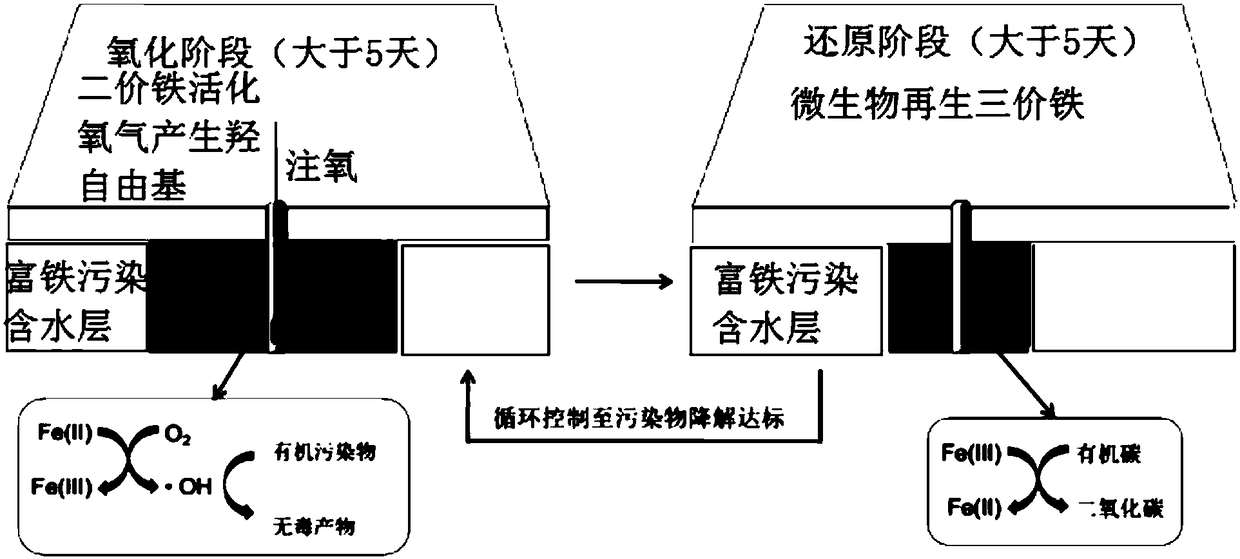In-situ remediation technology of low-concentration organic polluted underground water and application of in-situ remediation technology
A technology of organic pollution and in-situ remediation, applied in the direction of contaminated groundwater/leachate treatment, water pollutants, water/sewage treatment, etc., can solve problems such as difficulties, single treatment principle, and treatment compliance, and achieve low treatment costs , good treatment effect and mild treatment conditions
- Summary
- Abstract
- Description
- Claims
- Application Information
AI Technical Summary
Problems solved by technology
Method used
Image
Examples
Embodiment Construction
[0022] In order to make the purpose, technical solution and advantages of the present invention clearer, the embodiments of the present invention will be further described below in conjunction with the accompanying drawings.
[0023] Embodiments of the present invention provide an in-situ remediation process for low-concentration organic-contaminated groundwater, comprising the following steps:
[0024] S1. Build injection wells in groundwater polluted areas. The number of injection wells is determined according to the size of the polluted area. The service radius of a single injection well is 1-8 meters, the diameter is 20-150mm, and the well depth is greater than the buried depth of groundwater that needs to be repaired. A well pipe is installed in the injection well, the diameter of the well pipe is 10-100mm, the bottom of the well pipe is perforated and communicated with the aquifer to facilitate the injection of air, oxygen or other agents into the aquifer, and the length ...
PUM
| Property | Measurement | Unit |
|---|---|---|
| radius | aaaaa | aaaaa |
| diameter | aaaaa | aaaaa |
| diameter | aaaaa | aaaaa |
Abstract
Description
Claims
Application Information
 Login to View More
Login to View More - R&D
- Intellectual Property
- Life Sciences
- Materials
- Tech Scout
- Unparalleled Data Quality
- Higher Quality Content
- 60% Fewer Hallucinations
Browse by: Latest US Patents, China's latest patents, Technical Efficacy Thesaurus, Application Domain, Technology Topic, Popular Technical Reports.
© 2025 PatSnap. All rights reserved.Legal|Privacy policy|Modern Slavery Act Transparency Statement|Sitemap|About US| Contact US: help@patsnap.com

